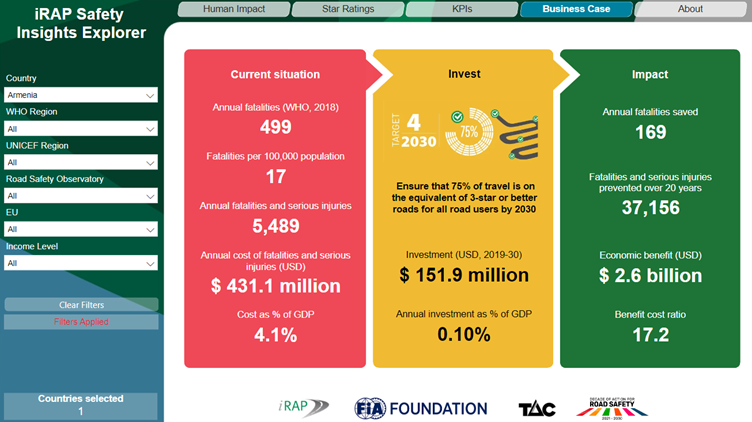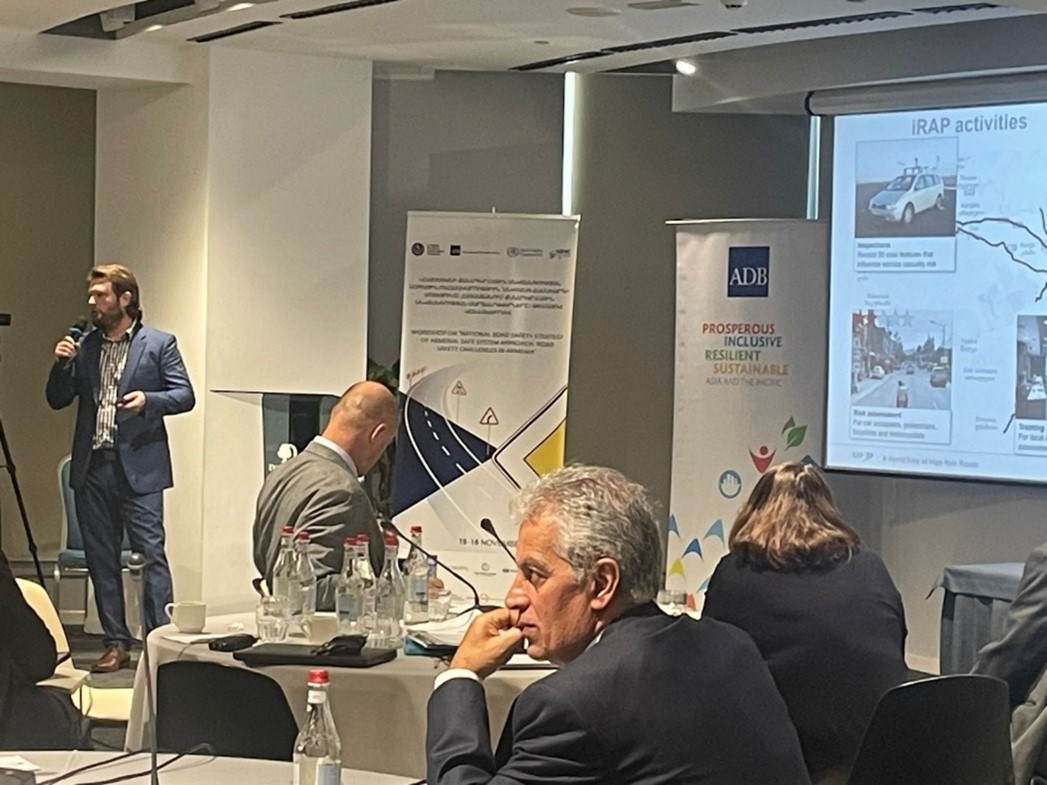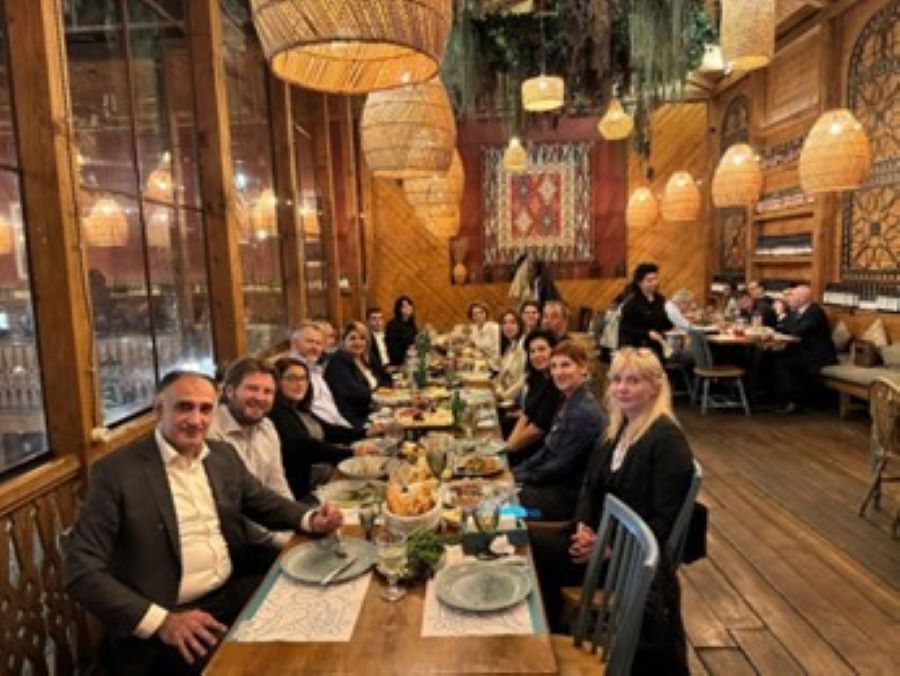iRAP joined over 60 local and international partners in Armenia on 15-16 November for an External Cabinet Meeting and Road Safety Workshop during which the draft National Road Safety Strategy 2023-2027 was tabled. iRAP took the opportunity to build local capacity in the iRAP Methodology and tools for safer road infrastructure.
iRAP Safer Journeys Lead Samar Abouraad and Global Operations Manager Luke Rogers joined the Cabinet Meeting and “National Road Safety Strategy of Armenia: Safe System Approach and Road Safety Challenges Workshop” along with stakeholders from the lead road safety agency National Road Safety Council, Ministry of Territorial Administration and Infrastructures of Armenia (MTAI), local police, university and the mobility club. Perspectives were also provided by international partners including iRAP, World Health Organisation (WHO), Asian Development Bank (ADB), Eastern Alliance for Safe and Sustainable Transport (EASST) and FIA Foundation.
The events’ programmes included presentations on road safety policy, UN Decade actions, and Safe System approaches for safe road infrastructure, safer vehicles and safe school zones.
The new draft National Strategy was introduced and a Memo of Intention was signed by the State and local Self Governments of the Republic of Armenia, ADB, WHO, World Bank, iRAP, road safety NGOs and workshop participants signalling their joint commitment to halve road traffic deaths and serious injuries in the country aligned to the UN Decade of Action for Road Safety 2021-2030.
The draft National Strategy 2023-2027 sets out proposed targets and actions to reduce the burden of road trauma in Armenia centred around five road safety pillars including road safety management, more secure roads and safe driving, safer transportation means, safer participants of traffic, and post-crash response.
iRAP congratulates the Ministry on the Strategy’s focus to improve road infrastructure safety through the provision for a network safety assessment to be completed by 2025 to understand road user risk and obtain safety star ratings through international criteria for roads assessment, such as iRAP.
The Strategy aims to evaluate the safety level of all roads for all road user groups by 2030 and ensure more than 75% of travel on existing roads achieves technical standards for road safety for all road users (such as achievement of an iRAP 3-star or better safety rating).
The Strategy also promotes the use of Star Rating for Schools to assess the safety of road infrastructure around 10-20 schools in Vanadzor and Gyumri, identification of two priority schools for upgrade, and implementation of road safety countermeasures to achieve 5-star journeys for students. It is envisaged this work will be completed by August 2024, in partnership with the Automobile Federation of Armenia (AFF), Association of Official Representatives of Automobile Automanufacturers (AORA), and Armenian road safety NGOs, supported by the FIA Road Safety Grant Scheme.
During the visit, Luke led local road safety stakeholders on a site visit to assess the infrastructure safety of two locations using the iRAP Star Rating Demonstrator.
Participants had the opportunity to learn about iRAP’s RAPTools and how they can assist to identify high-risk road sections and develop Safer Roads Investment Plans to inform strategic investment in safety improvements.
iRAP will now work with the Ministry and partners to develop a plan to eliminate high-risk roads in Armenia including a potential iRAP pilot project and use of Star Rating for Schools for safer school journeys.
According to local data, about 40,000 road crashes and more than 58,000 injuries were recorded in Armenia between 2012-2022, contributing to an annual loss of 4.1% of the country’s Gross Domestic Product (GDP). Both road crashes and injuries have also shown to be increasing over the period at an average annual increase of 7.6%.
According to iRAP Safety Insights Explorer, achieving UN Target 4 for greater than 75% of travel on 3-star or better roads for all road users in the country by 2030 stands to save an estimated 37,156 lives and serious injuries over the 20-year life of road treatments with an economic benefit of USD$2.6 billion – $17.20 for every $1 spent.


Luke presents to Workshop participants on the iRAP Methodology and activities to support safe roads

Armenian road safety partners joined for dinner following the workshop (Images credit: iRAP)


















